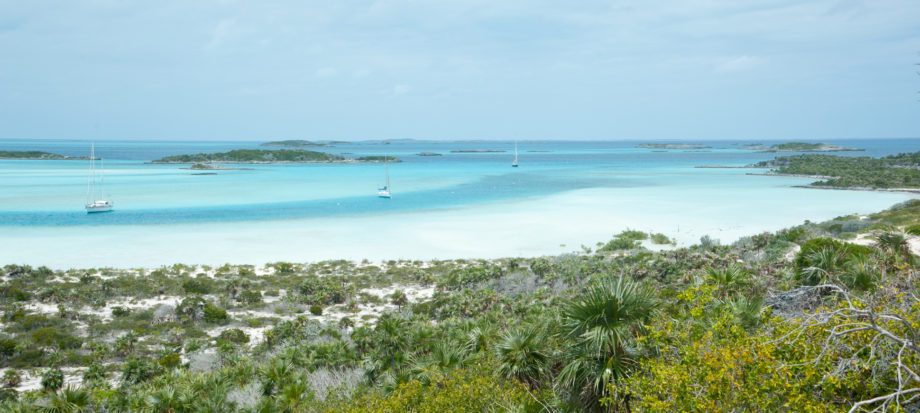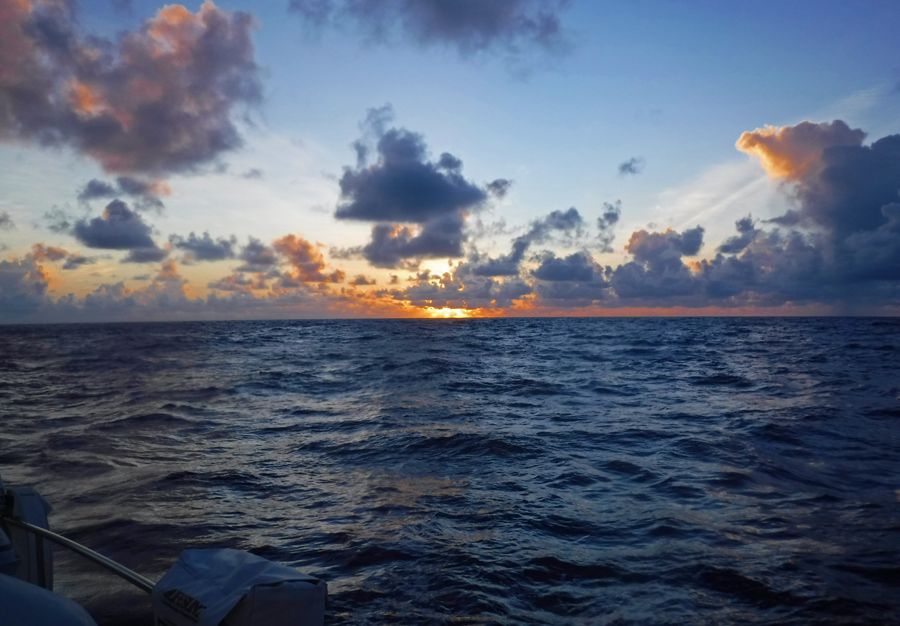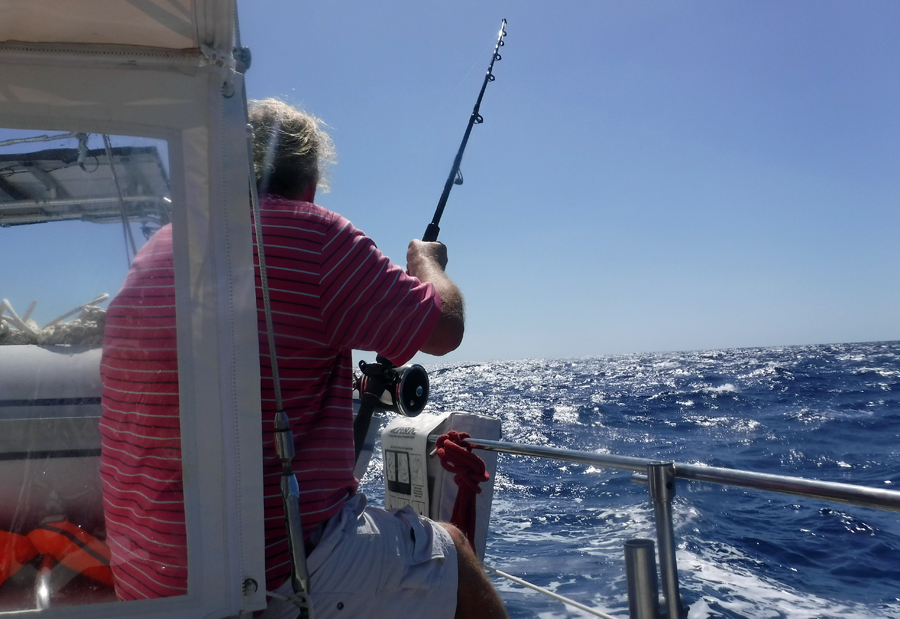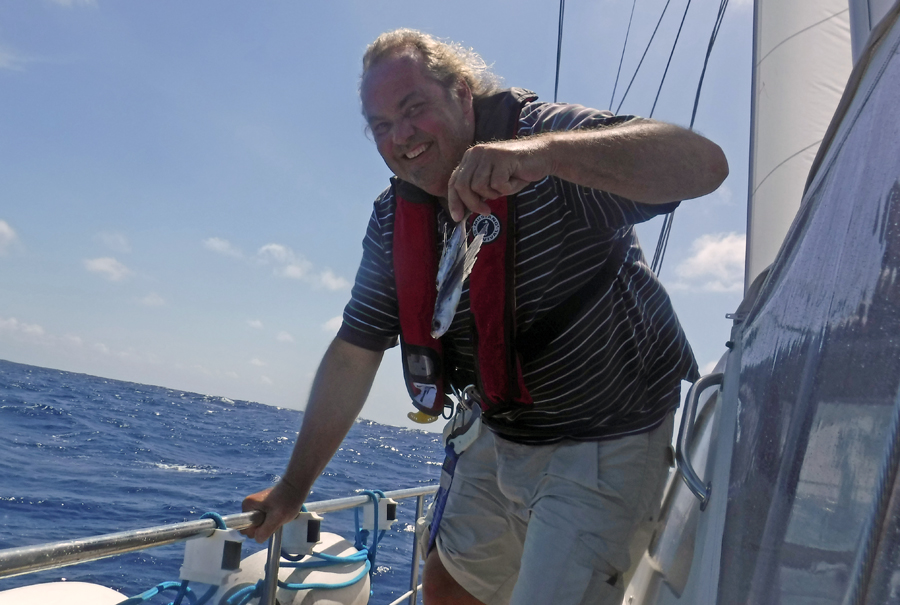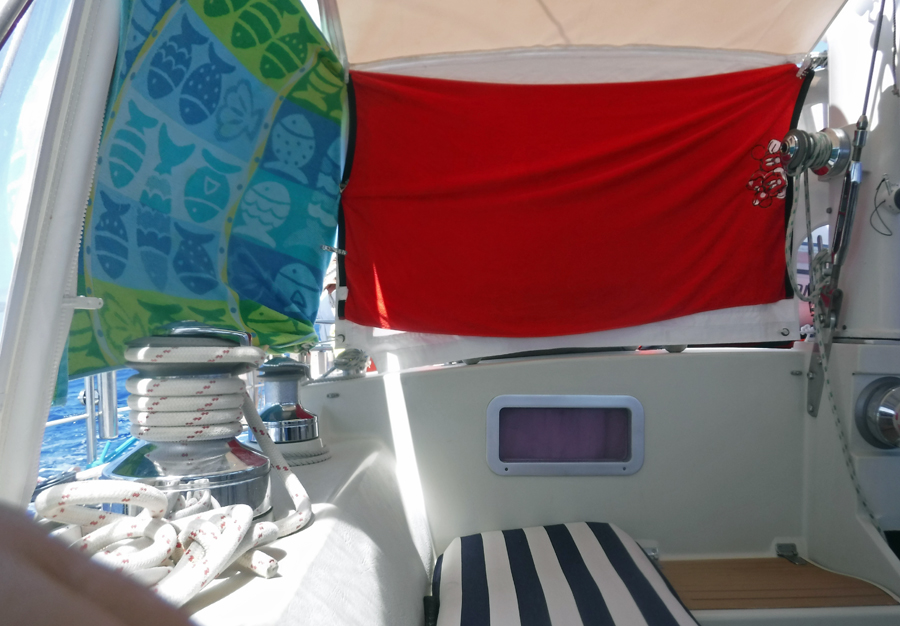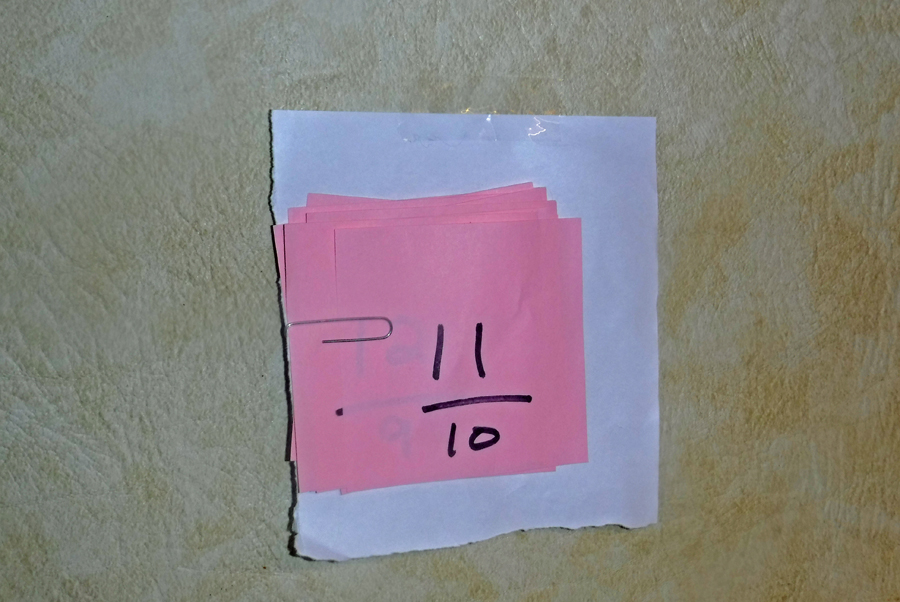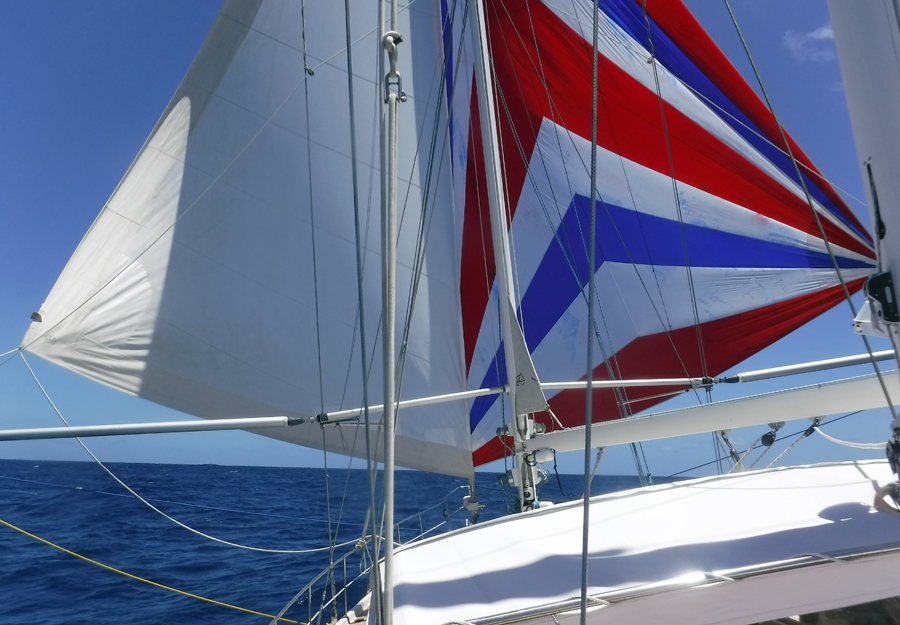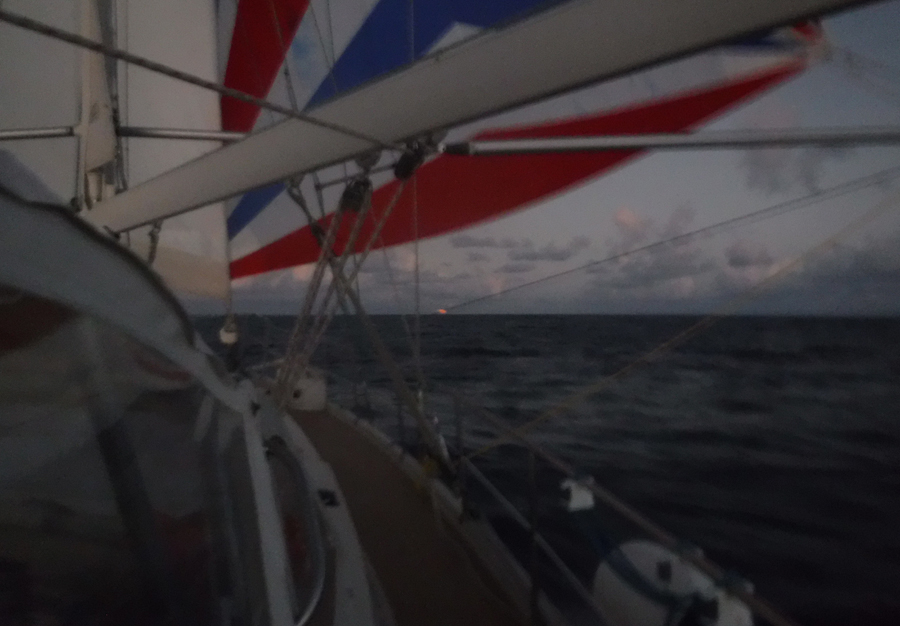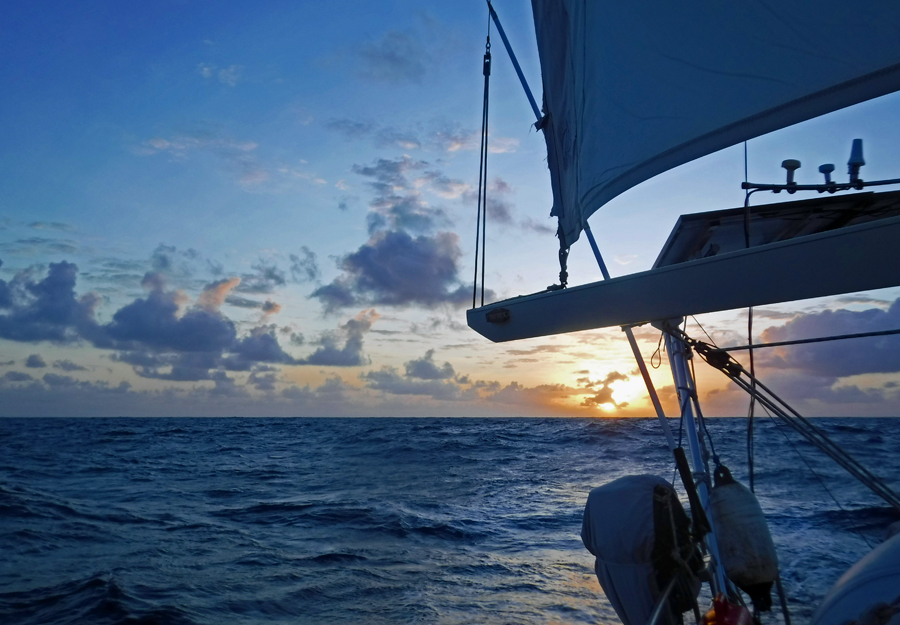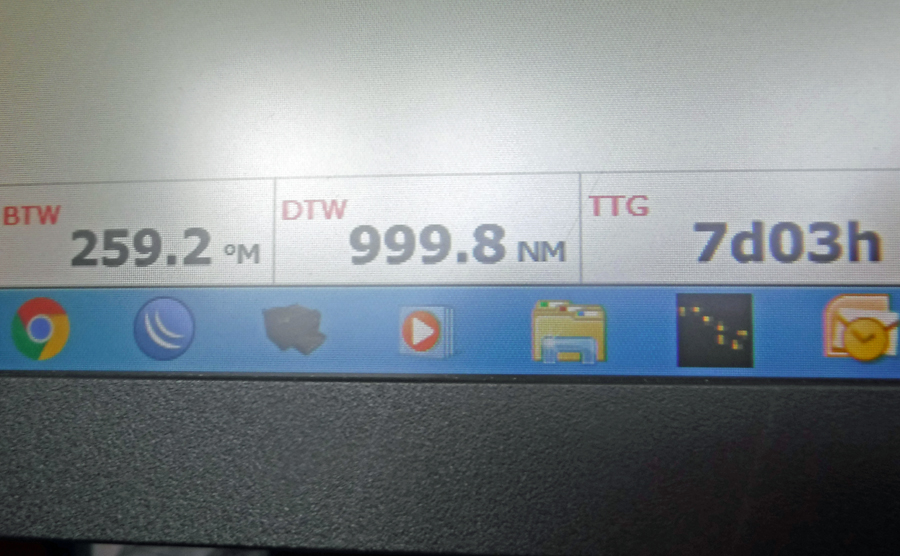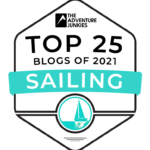When we left Galapagos, our destination was meant to be the Marquesas Islands, specifically Nuku Hiva in French Polynesia some 3400 miles due west. Our plans changed because of new Covid-19 regulations made by the French government regarding check-in procedures. About 60 hours out of Nuku Hiva, our agent notified us of the changes and we decided it would be best to re-route to Tahiti adding another 700 miles and 6 days to our trip. I will write more about the effect of the virus on us in our next posting. For now, I will focus on the passage we made. During our 30-days at sea, I made notes of things I learned. As crazy stuff popped into my head, I jotted it down in a notebook. Trying to decipher my terrible handwriting, I will now share these useless little nuggets of wisdom with you.
Things learned when crossing the South Pacific Ocean:
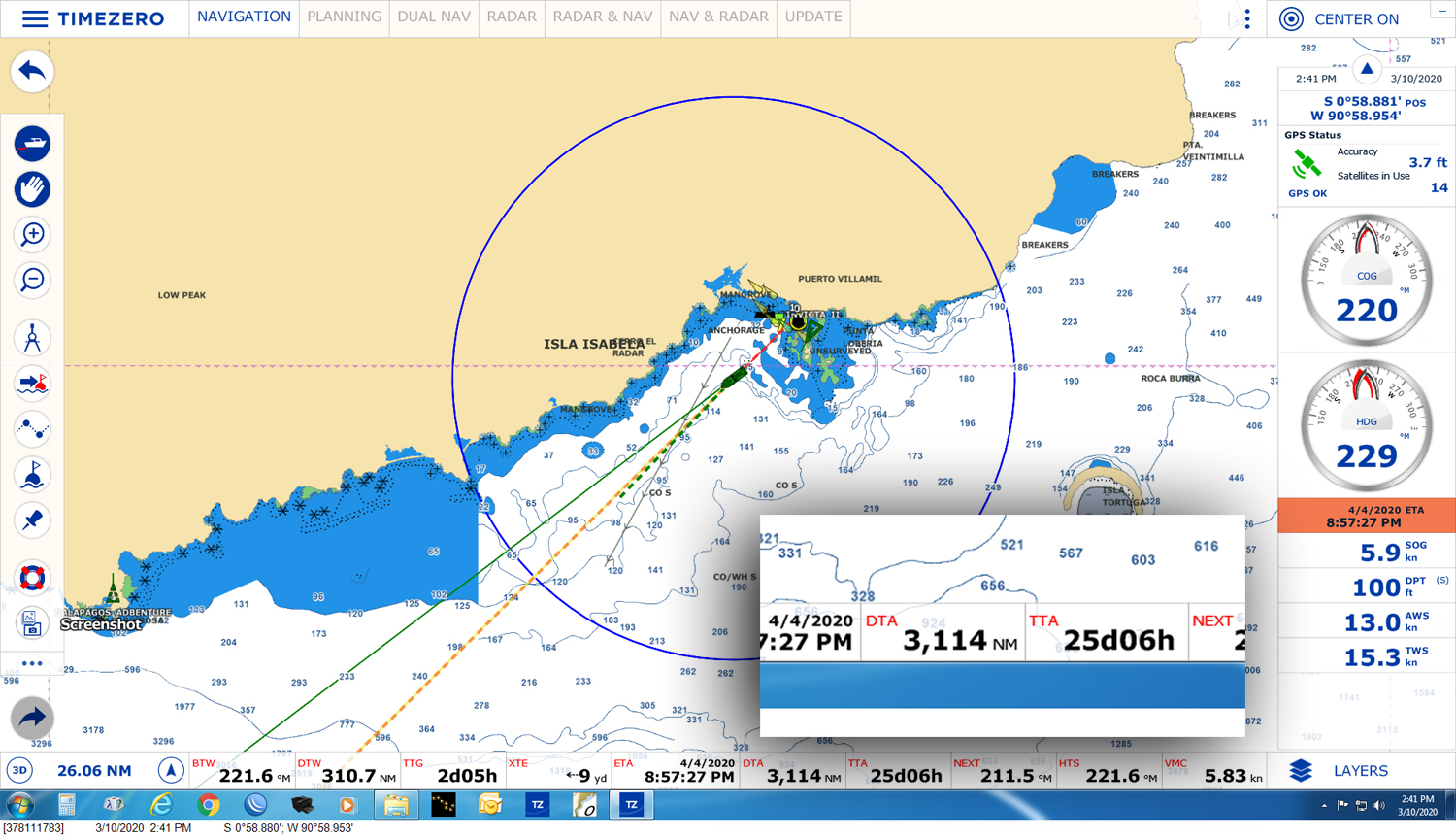
Our ship’s computer tells us we have 3114 nm to travel over 25 days as we leave Isabela Island in the Galapagos
- Looking at a plotter with a course like this is very daunting (pic above)
- When on the foredeck, no matter where you are sitting regarding the proximity of a loose halyard, it’s going to find you and slap you on the head. Ouch!
- There are no fish between the Galapagos Islands and the Marquesas Islands. According to the -advertising on my fishing lure package, I should have caught a fish every ten minutes. They wouldn’t lie on their packaging, would they? Therefore the only logical conclusion is all the fish must have moved somewhere else. (Full disclosure: when we rerouted toward Tahiti after I made this determination, I did catch a massive tuna which filled our freezer.)
- The waves are much bigger at night. This is not actually true. However, the pitch-black darkness with no moon and not being able to see anything seems to enhance the sounds of the ocean. When the sun rises or sailing under the moonlight, the sea seems much calmer.
- Also at night, the wind through the rigging can sound like people calling out. Spooky!
- During the nights with no moon, the stars in the South Pacific Ocean are incredible. I have never seen stars ranging from horizon to horizon. They fill 100% of the night sky and have an awesome 3D effect. The milky-way looks like a person can reach out and touch it. Incredible!
- Waking up airborne in my bunk is not fun.
- Flying fish are suicidal creatures. Seriously! Every day, one of our jobs is to toss back into the ocean the now-dead fish carcasses that landed on the deck during the night hours. By the way, they also stink. Our total body count for the trip: 42
- Being hit by a flying fish while on watch in the cockpit at night is not fun.
- I can sleep through anything.
- I wake up tired and go to bed exhausted.
- Sailing 3400 miles takes a long time. Adding an extra 700 to an already long journey was disappointing. Especially when we think we are almost there.
- There are not enough hand-holds on the boat. (Amel yachts have more than most other brands but still not enough)
- Dragging fenders in the water overnight makes them nice and clean.
- Everything, and I mean everything, is cover with salt slim. It never gets better only worse, unless it rains.
- Taking a hot shower has never felt better (see above point). It is a feeling comparable to having a massage by an expert Japanese masseuse at the Four Seasons Resort and Spa.
- Solar panels are one of the best investments a cruising sailor can make. On sunny days we can run our 24v water-maker and still have enough energy to fully charge the house batteries. Investing in solar is only secondary to a good auto-pilot.
- Sunshine is brutal.
- We have 53’ of boat and often find ourselves huddled together elbowing for space in the 4’ of shade. (Yes, we do have full cockpit canvas covers.)
- Cloudy days mean less solar energy but are easier to tolerate.
- The South Pacific Ocean is big.
- Pancakes, eggs, and bacon is a real treat when passage making.
- Yogurt and fruit might be a healthier breakfast but not near as much fun as pancakes, eggs, and bacon.
- Cindy is an excellent planner. She spent two days in Galapagos pre-cooking meals for the trip and filled our freezers. We ate really well during this trip. By doing this, she was also able to dispose of the food packaging trash before our departure minimizing the amount of trash we accumulated in route. After 30 days at sea, we landed with one small bag of trash.
- Keeping track of time when sailing across three time zones is impossible. Most of the time we have no idea of the day or date. Cindy made post-it notes to help keep track of the days out and days remaining. One day, I had a complete brain shut down and had to turn on a tablet to confirm the year.
- My digital nightstand clock decided not to work south of the equator. It must be a northern hemisphere only clock. These particular time-pieces do not work upsidedown.
- Since crossing the equator, we are now upsidedown on the planet. Thank goodness for gravity!
- Looking at the International Space Station pass overhead (the closest humans to us) makes me envious of their view.
- No matter from which direction the wind blows, it is never quite perfect for the direction we wish to sail.
- Sea birds are curious. I like it when an Albatross circles Cream Puff and will position itself alongside so it can see under our canvas covers and check us out. I guess for the bird it is like us spotting a UFO. We are their entertainment for the day as we share an enchanting moment. I wonder if their friends believe them when they claim they saw a UFO (unidentified floating object).
- Albatrosses are shy when the camera is out.
- I now know what a rag-doll in a washing machine on the wash cycle feels like.
- I don’t know how cruisers on catamarans with wide-open spaces inside manage to stay alive. Cats may not heel like monohulls but they do pitch and roll and wide-open spaces can cause a sailor to go flying.
- Non-skid mats on the kitchen countertops are a necessity, not a luxury.
- Day 20 – I am longing for a slow-smoked cut of prime-rib with sautéed fresh mushrooms, and a baked potato topped with butter, sour cream and chives (for British readers: potato in its jacket).
- Also on day 20 – I realize I continue to dream about land stuff when asleep. I wonder how long it will take my brain to dream about sea stuff or life on a boat.
- Cindy, when on watch, likes to point the boat so the waves are on the stern giving us a more comfortable ride. I tend to point the boat at the island we are calling our destination. Sometimes the two headings do not agree. We zig-zag our way westward.
- We will now start to order supplies and spare parts from Australia and New Zealand since we are closer to them than the Americas. The Aussie and Kiwi companies understand shipping items sea freight. Most U.S. retailers struggle with shipping something other than FedEx or DHL. When we order stuff, the majority of the time we do not need it expedited. Sea freight is about 1/10th the price of air freight.
- It is amazing how much hair is caught in the nooks and crannies of Cream Puff. We used to be able to blame hairballs on our dogs. It’s hard to blame something else when it is just the two of us in the middle of nowhere. Humans are hair generation machines.
- This passage has confirmed how much I hate light wind sailing. I am talking about conditions where no matter what we do the sails flap about like wet noodles and periodically pop when there is just enough wind to make them do so. Then, they just flap about some more. And, of course, the sea swells always come from a different direction than the wind causing the boat to roll. When Cream Puff rolls the wind is knocked out of the sails causing the sails to back-wind and a tremendous commotion transpires. This can go on for days. Because of the lack of wind and little forward motion, the boat bobs about like a cork making it just about impossible to stand up or do anything other than sit and tolerate it. When we are lucky enough to have the occasional gust of wind that just happens to come from the right direction the sails will pop and cause a shudder throughout the entire boat. Sometimes it is enough to wake up the dead. Yep! I hate light weather sailing.
- Never say things like “we are almost there” or “I’ll put the champagne in the refrigerator”. If you do happen to utter these words, something bad is going to happen. For instance, you could be re-routed and have your journey extended by 6 more days and 700 miles.
- I have a new respect for amputees. The golden rule of sailing offshore is to always have one hand holding onto the boat to prevent flying lessons. Trying to do simple things like plugging in a mini-USB plug into a tablet can be an enormous challenge with one hand. Keep in mind the item you are trying to plug in is a moving target. (Note to electronic manufacturers: smaller is not always better)
- Touch-screens are worthless on the ocean. Remember the thing I learned about everything being covered with salt grime?
- Hella brand fans suck! Don’t ever waste your money on these. Cheap fans we purchased on Amazon have outlasted the expensive Hella “marine” fans. I once complained to Hella about this and they sent me six new fans because six of the ten I installed on Cream Puff failed within about 2 years. Now a couple of years later, they are all breaking again. I will never install Hella fans again even if they sent me more free ones.
- I hurt all over. This is caused by natural reactions to try to stay upright and compensating for the movement of the boat. Advil helps.
- Do not attempt to put on shorts or pants without protective headgear. A motorcycle helmet would be very appropriate for this task. Imagine having your feet together and using both hands at once on a rolling floor. You are going to fall over. It is the head that will meet any surrounding hard surface before any other part of the body. Ask me how I know this.
- No matter how prepared you think you are to go on a long passage, Murphy and Neptune have the full-time job of pointing out the things you forgot to prepare.
- Full-body pillows (dakimakuras) are better than lee-boards for berth restraints. Rolling out of bed and waking up on the floor is not a good thing.
- A bag full of laundry can be used as a substitute for a full-body pillow.
- The world has gone crazy. When we departed Galapagos, the Corona Virus was relatively a new thing (Trump had just visited the CDC). It was being positioned by Trump and many others as a bad flu with a mortality rate of less than 3%. It was stated, like influenza, no cure exists and healthy people would become ill for about a week with flu-like or bronchitis-like symptoms and then fully recover. The mortality rate was high amongst the elderly or individuals of poor health, again like influenza. The regular flu kills about 1,500,000 people each year. Did the virus mutate during our passage? Did we get bad initial information? Then, why did governments about the world decide to implode the healthiest economy of all time? And, why the sudden need to buy toilet paper? This is not a gastro virus. Good grief! I guess I have some reading to do.
- Very glad we have a lot of toilet paper aboard and were able to avoid the toilet paper pirates of the South Pacific.
- Being in the middle of nowhere and having no internet when the world goes crazy is a good thing.
Total nautical miles sailed: 3862 (7152 km, 4,444 miles) Total days at sea: 29. To help put this in perspective, the United States at its widest girth is 2,800 miles wide when measured horizontally from the eastern seaboard to the west coast (West Quoddy Head in the east to Point Arena in West). When we could clearly see the coast of Tahiti we knew one of two things to be certain. We would either safely complete our first ocean crossing or, we’re close enough to be rescued now.
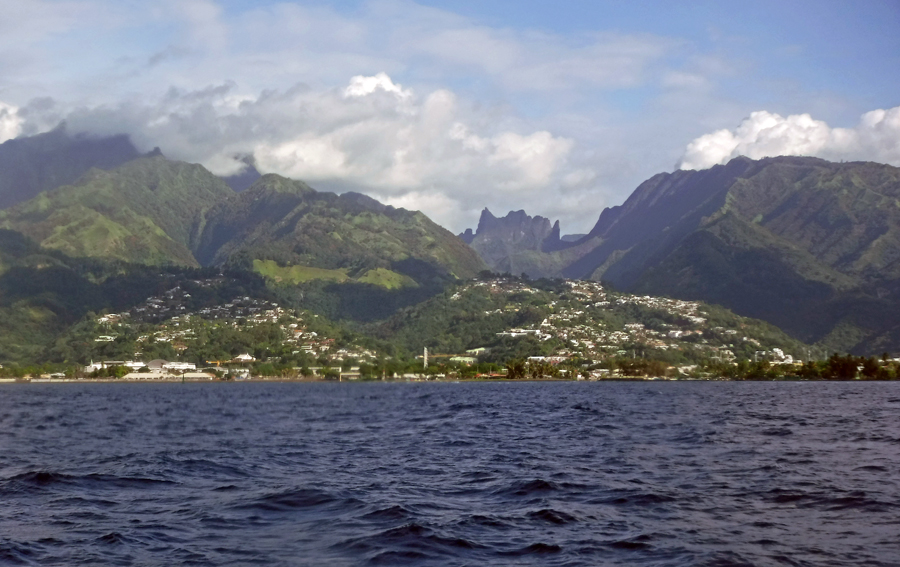
Land! We are in awe of the beauty of Tahiti as we sail past the northern tip to our designated anchorage for check-in with government officials.
